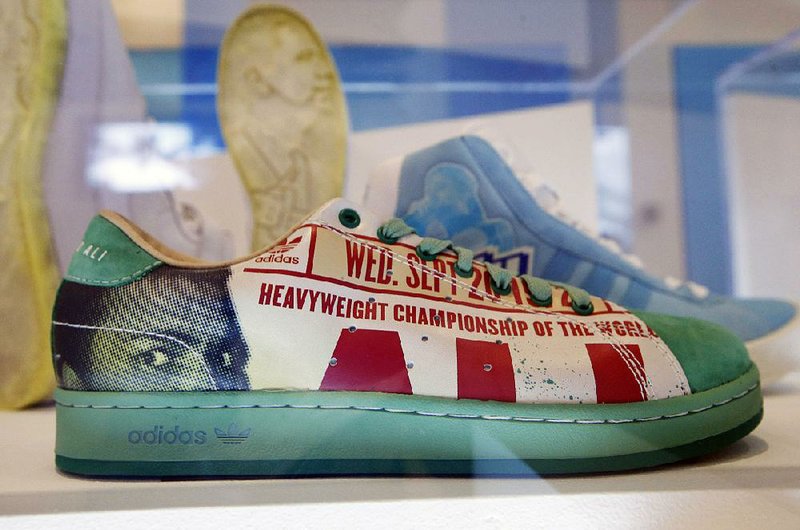NEW YORK — The sneaker is a force in fashion, music and sports, but where did it begin?
“I wanted to go all the way back to the sap of the tree — the rubber tree — and find out how and why the sneaker even came into existence in the first place,” said senior curator Elizabeth Semmelhack of the Brooklyn Museum, about the exhibit “The Rise of Sneaker Culture.”
The exhibit of about 150 shoes is ambitious in scope, spanning rubber production to Prada to the coveted kicks bearing basketball legend Michael Jordan’s name, along with his monumental endorsement deal with Nike. Semmelhack created the show after 15 years focusing on high heels, when she realized “there is no way I can ignore the sneaker because they are so important culturally.”
Sneakers are the subject of songs and have helped turn multimillionaire athletes into fashion designers.
Among those showcased are Adidas donated by Darryl “DMC” McDaniels, from rap group Run-DMC. The group was among the first music acts to get a sneaker endorsement deal. Original Converse All-Stars from 1917, a replica of Michael Johnson’s 1996 Atlanta Olympics gold spikes and Adidas Muhammad Ali Confidence Shoes are also included.
“These are sneakers that you just cannot see,” Semmelhack said. “They are seeing some shoes that are hidden away in the archives and in recesses of people’s offices that if it was not for the exhibition they wouldn’t have gotten a chance to see.”
After Brooklyn, the historical look at sneakers will travel to the Toledo (Ohio) Art Museum, the Speed Art Museum in Louisville, Ky., and the High Museum of Art in Atlanta.
Before the five-day workweek, only the wealthy could make the time to play tennis and jog in the early 19th century — and they were the only ones who had a need for sneakers. Between the two world wars, governments began to democratize physical health and sneakers so that people had fit bodies to serve their country.
It was not until the 1970s that sneaker culture began to develop as we see it today, when Nike got into the game.
“They begin to segue back to a status symbol, as well as fashion, because these same people who are jogging begin to wear those bright-colored shoes to discos like Studio 54 and the idea of casual wear and fashion is becoming really important,” Semmelhack said.
Another aspect of sneaker culture Semmelhack could not ignore is crime associated with getting the latest pair.
“I feel like it’s a little paternalistic to constantly warn young black men in particular to be careful of their sneakers,” she said. “The price point of sneakers is remarkably less than the price point of women’s shoes but we don’t hear these same stories about women.”
Fashion giants like Gucci and Prada entered the sneaker industry early on but sneakers did not turn high-end until sports brands teamed up with designers like Jeremy Scott and Yohji Yamamoto, and companies like Jimmy Choo and Louis Vuitton saw the value in the billion-plus business.
“Men are willing to wear pattern and color in their footwear in ways that they are not willing to wear in aspects of their dress and so for fashion designers, sneakers are the perfect canvas for playing with,” Semmelhack said.
“The Rise of Sneaker Culture,” through Oct. 4, Brooklyn Museum of Art, New York. Info: brooklynmuseum.org

